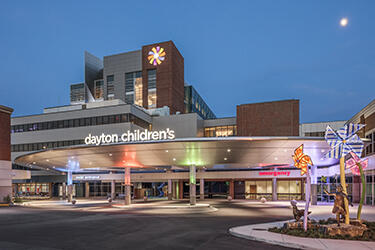The Child and Adolescent Psychiatry Fellowship trains child and adolescent psychiatrists to excel in both traditional and modern practices, integrating research and community engagement. Trainees gain expertise through diverse clinical experiences and collaborations with institutions like Dayton Children's Hospital and Wright-Patterson Air Force Base.

About the Program
Director: Kari Harper, M.D.
Today's child and adolescent psychiatrist faces special challenges brought on by an explosion of knowledge about mental illness in children and a shortage of resources. We are committed to the education of physicians who will thrive and become leaders and role models in this environment. Our division's scientific and scholarly pursuits are enriched by a humanistic perspective. Informed by Pellegrino's dictum that "The greatest inhumanity is incompetence," we pursue clinical excellence as a duty.
Trainees acquire a scholarly appreciation of the history and literature of our discipline and how it has been enriched by associated disciplines. They will be clinicians with skill in both the traditional strengths of psychiatric practice and in 21st century technology. They become scientifically sophisticated, with an appreciation of research methods and a healthy skepticism for all dogma and common practice. They participate as principal investigators and collaborators in clinical research. Residents are taught by psychiatric faculty as well as professionals from other disciplines in an extensive and organized teaching program.
Our program is interactive in a larger social sphere, preparing our graduates to serve and lead in a wide range of settings. We function within the community, at multiple clinical, social and educational institutions, such as Dayton Children's Hospital, Kettering Hospital Youth Services, Butler Behavioral Health Services, The Rocking Horse Center and the USAF Medical Center at Wright-Patterson Air Force Base. We enjoy a direct affiliation with the Montgomery County Alcohol, Drug Addiction, and Mental Health Services Board. Within Wright State University we interact in a scholarly and clinical fashion with the Department of Pediatrics and the rest of the Boonshoft School of Medicine, as well as with other colleges.
Resources
Child and Adolescent Psychiatry Resources
- American Academy of Child and Adolescent Psychiatry
- Journal of the American Academy of Child and Adolescent Psychiatry
Autism and PDD Resources
- Autism Society of America
- Tourette Syndrome Association - Resources for Youth
- Obsessive-Compulsive Foundation

